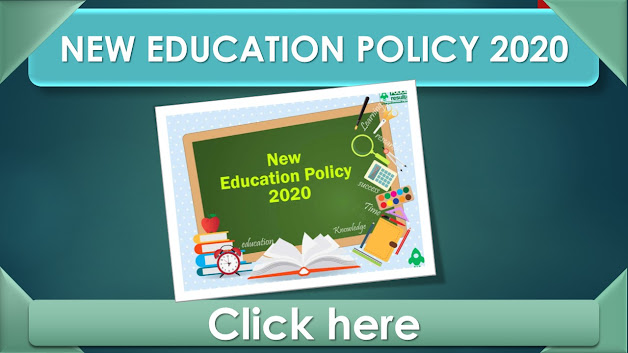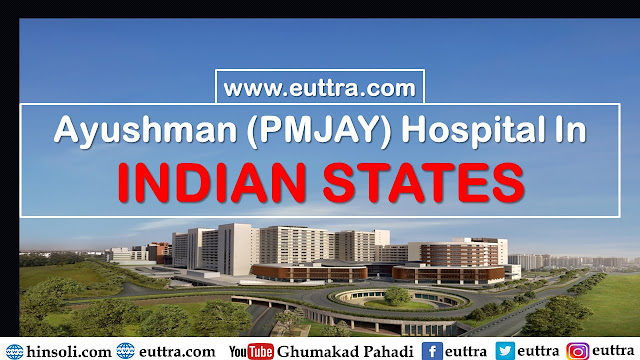Part IV. MAKING IT HAPPEN
25. Strengthening the Central Advisory Board of Education
25.1. Achieving successful implementation of this policy demands a long-term vision, availability of expertise on a sustained basis, and concerted action from all concerned encompassing National, State, institutional, and individual levels. In this context, the Policy recommends strengthening and empowering the Central Advisory Board of Education (CABE) which will have a much greater mandate and not only a forum for widespread consultation and examination of issues relating to educational and cultural development. The remodeled and rejuvenated CABE shall also be responsible for developing, articulating, evaluating, and revising the vision of education in the country on a continuous basis, in close collaboration with MHRD and the corresponding apex bodies of States. It shall also create and continuously review the institutional frameworks that shall help attain this vision.
25.2. To bring the focus back on education and learning, it is desirable that the Ministry of Human Resource Development (MHRD) be re-designated as the Ministry of Education (MoE).
26. Financing: Affordable and Quality Education for All
26.1. The Policy commits to significantly raising educational investment, as there is no better investment towards a society ’s future than the high-quality education of our young people. Unfortunately, public expenditure on education in India has not come close to the recommended level of 6% of GDP, as envisaged by the 1968 Policy, reiterated in the Policy of 1986, and which was further reaffirmed in the 1992 review of the Policy. The current public (Government - Centre and States) expenditure on education in India has been around 4.43% of GDP (Analysis of Budgeted
Expenditure 2017-18) and only around 10% of the total Government spending towards education (Economic Survey 2017-18). These numbers are far smaller than most developed and developing countries.
26.2. In order to attain the goal of education with excellence and the corresponding multitude of benefits to this Nation and its economy, this Policy unequivocally endorses and envisions a substantial increase in public investment in education by both the Central government and all State Governments. The Centre and the States will work together to increase the public investment in Education sector to reach 6% of GDP at the earliest. This is considered extremely critical for achieving the high-quality and equitable public education system that is truly needed for India's future economic, social, cultural, intellectual, and technological progress and growth.
26.3. In particular, financial support will be provided to various critical elements and components of education, such as ensuring universal access, learning resources, nutritional support, matters of student safety and well-being, adequate numbers of teachers and staff, teacher development, and support for all key initiatives towards equitable high-quality education for underprivileged and socio-economically disadvantaged groups.
26.4. In addition to one-time expenditures, primarily related to infrastructure and resources, this Policy identifies the following key long-term thrust areas for financing to cultivate an education system: (a) universal provisioning of quality early childhood care education; (b) ensuring foundational literacy and numeracy; (c) providing adequate and appropriate resourcing of school complexes/clusters; (d) providing food and nutrition (breakfast and midday meals); (e) investing in teacher education and continuing professional development of teachers; (f) revamping colleges and universities to foster excellence; (g) cultivating research; and (h) extensive use of technology and online education.
26.5. Even the low level of funding on education in India, is frequently not spent in a timely manner at the District/institution level, hampering the achievement of the intended targets of those funds. Hence, the need is to increase efficiency in use of available budget by suitable policy changes. Financial governance and management will focus on the smooth, timely, and appropriate flow of funds, and their usage with probity; administrative processes will be suitably amended and streamlined so that the disbursal mechanism may not lead to a high volume of unspent balances. The provisions of GFR, PFMS and ‘Just in Time’ release to implementing agencies will be followed for efficient use of government resources and avoiding parking of funds. Mechanism of performance-based funding to States / HEIs may be devised. Similarly, efficient mechanism will be ensured for the optimal allocation and utilization of funds earmarked for SEDGs. The new suggested regulatory regime, with clear separations of roles and transparent self-disclosures, empowerment and autonomy to institutions, and the appointment of outstanding and qualified experts to leadership positions will help to enable a far smoother, quicker, and more transparent flow of funds.
26.6. The Policy also calls for the rejuvenation, active promotion, and support for private philanthropic activity in the education sector. In particular, over and above the public budgetary support which would have been otherwise provided to them, any public institution can take initiatives towards raising private philanthropic funds to enhance educational experiences.
26.7. The matter of commercialization of education has been dealt with by the Policy through multiple relevant fronts, including: the ‘light but tight’ regulatory approach that mandates full public self-disclosure of finances, procedures, course and programme offerings, and educational outcomes; the substantial investment in public education; and mechanisms for good governance of all institutions, public and private. Similarly, opportunities for higher cost recovery without affecting the needy or deserving sections will also be explored.
27. Implementation
27.1. Any policy’s effectiveness depends on its implementation. Such implementation will require multiple initiatives and actions, which will have to be taken by multiple bodies in a synchronized and systematic manner. Therefore, the implementation of this Policy will be led by various bodies including MHRD, CABE, Union and State Governments, education-related Ministries, State Departments of Education, Boards, NTA, the regulatory bodies of school and higher education, NCERT, SCERTs, schools, and HEIs along with timelines and a plan for review, in order to ensure that the policy is implemented in its spirit and intent, through coherence in planning and synergy across all these bodies involved in education.
27.2. Implementation will be guided by the following principles. First, implementation of the spirit and intent of the Policy will be the most critical matter. Second, it is important to implement the policy initiatives in a phased manner, as each policy point has several steps, each of which requires the previous step to be implemented successfully. Third, prioritization will be important in ensuring optimal sequencing of policy points, and that the most critical and urgent actions are taken up first, thereby enabling a strong base. Fourth, comprehensiveness in implementation will be key; as this Policy is interconnected and holistic, only a full-fledged implementation, and not a piecemeal one, will ensure that the desired objectives are achieved. Fifth, since education is a concurrent subject, it will need careful planning, joint monitoring, and collaborative implementation between the Centre and States. Sixth, timely infusion of requisite resources - human, infrastructural, and financial - at the Central and State levels will be crucial for the satisfactory execution of the Policy. Finally, careful analysis and review of the linkages between multiple parallel implementation steps will be necessary in order to ensure effective dovetailing of all initiatives. This will also include early investment in some of the specific actions (such as the setting up of early childhood care and education infrastructure) that will be imperative to ensuring a strong base and a smooth progression for all subsequent programmes and actions.
27.3. Subject-wise implementation committees of experts in cooperation and consultation with other relevant Ministries will be set up at both the Central and State levels to develop detailed implementation plans for each aspect of this Policy in accordance with the above principles to achieve the goals of the Policy in a clear and phased manner. Yearly joint reviews of the progress of implementation of the policy, in accordance with the targets set for each action, will be conducted by designated teams constituted by MHRD and the States, and reviews will be shared with CABE. In the decade of 2030-40, the entire policy will be in an operational mode, following which another comprehensive review will be undertaken.
English Link
- NatNational Education Policy 2020ional
- NEP 2020 ,Part I. SCHOOL EDUCATION
- NEP 2020 ,Part I. Curriculum and Pedagogy in Schools: Learning Should be Holistic, Integrated, Enjoyable, and Engaging
- NEP 2020 ,Part I. Teachers
- NEP 2020 ,Part I, Equitable and Inclusive Education: Learning for All
- NEP 2020 ,Part I, Efficient Resourcing and Effective Governance through School Complexes/Clusters
- NEP 2020 ,Part I, Standard-setting and Accreditation for School Education
- NEP 2020 , Part II, HIGHER EDUCATION
- NEP 2020 , Part II, HIGHER EDUCATION, Institutional Restructuring and Consolidation
- NEP 2020 , Part II, HIGHER EDUCATION, Towards a More Holistic and Multidisciplinary Education
- NEP 2020 , Part II, HIGHER EDUCATION, Optimal Learning Environments and Support for Students
- NEP 2020 , Part II, HIGHER EDUCATION, Motivated, Energized, and Capable Faculty
- NEP 2020 , Part II, HIGHER EDUCATION, Equity and Inclusion in Higher Education
- NEP 2020 , Part II, HIGHER EDUCATION, Teacher Education
- NEP 2020 , Part II, HIGHER EDUCATION, Reimagining Vocational Education
- NEP 2020 , Part II, HIGHER EDUCATION, Catalysing Quality Academic Research in All Fields through a new National Research Foundation
- NEP 2020 , Part II, HIGHER EDUCATION, Transforming the Regulatory System of Higher Education
- NEP 2020 , Part II, HIGHER EDUCATION, Effective Governance and Leadership for Higher Education Institutions
- NEP 2020, Part III, OTHER KEY AREAS OF FOCUS
- NEP 2020, Part III, Adult Education and Lifelong Learning
- NEP 2020, Part III, Promotion of Indian Languages, Arts, and Culture
- NEP 2020, Part III, Technology Use and Integration
- NEP 2020, Part III, Online and Digital Education: Ensuring Equitable Use of Technology
- NEP 2020, Part IV, MAKING IT HAPPEN
हिंदी लिंक
- NatNational Education Policy 2020ional (राष्ट्रीय शिक्षा नीति 2020)
- एनईपी 2020, भाग I। स्कूल शिक्षा
- एनईपी 2020, भाग I। स्कूलों में पाठ्यचर्या और शिक्षाशास्त्र: सीखना समग्र, एकीकृत, आनंददायक और आकर्षक होना चाहिए
- एनईपी 2020, भाग I। शिक्षक
- एनईपी 2020, भाग I, समान और समावेशी शिक्षा: सभी के लिए सीखना
- एनईपी 2020, भाग I, स्कूल परिसरों / समूहों के माध्यम से कुशल संसाधन और प्रभावी शासन
- एनईपी 2020, भाग I, स्कूली शिक्षा के लिए मानक-सेटिंग और प्रत्यायन
- एनईपी 2020, भाग II, उच्च शिक्षा
- एनईपी 2020, भाग II, उच्च शिक्षा, संस्थागत पुनर्गठन और समेकन
- NEP 2020, भाग II, उच्च शिक्षा, एक अधिक समग्र और बहुविषयक शिक्षा की ओर
- एनईपी 2020, भाग II, उच्च शिक्षा, इष्टतम शिक्षण वातावरण और छात्रों के लिए समर्थन
- एनईपी 2020, भाग II, उच्च शिक्षा, प्रेरित, ऊर्जावान और सक्षम संकाय
- NEP 2020, भाग II, उच्च शिक्षा, समानता और उच्च शिक्षा में समावेश
- एनईपी 2020, भाग II, उच्च शिक्षा, शिक्षक शिक्षा
- एनईपी 2020, भाग II, उच्च शिक्षा, व्यावसायिक शिक्षा की पुनर्कल्पना
- एनईपी 2020, भाग II, उच्च शिक्षा, एक नए राष्ट्रीय अनुसंधान फाउंडेशन के माध्यम से सभी क्षेत्रों में गुणवत्तापूर्ण शैक्षणिक अनुसंधान को उत्प्रेरित करना
- NEP 2020, भाग II, उच्च शिक्षा, उच्च शिक्षा की नियामक प्रणाली को बदलना
- NEP 2020, भाग II, उच्च शिक्षा, उच्च शिक्षा संस्थानों के लिए प्रभावी शासन और नेतृत्व
- एनईपी 2020, भाग III, फोकस के अन्य प्रमुख क्षेत्र
- एनईपी 2020, भाग III, प्रौढ़ शिक्षा और आजीवन शिक्षा
- एनईपी 2020, भाग III, भारतीय भाषाओं, कला और संस्कृति को बढ़ावा देना
- एनईपी 2020, भाग III, प्रौद्योगिकी उपयोग और एकीकरण
- एनईपी 2020, भाग III, ऑनलाइन और डिजिटल शिक्षा: प्रौद्योगिकी का समान उपयोग सुनिश्चित करना
- एनईपी 2020, भाग IV, इसे संभव बनाना










Follow Us